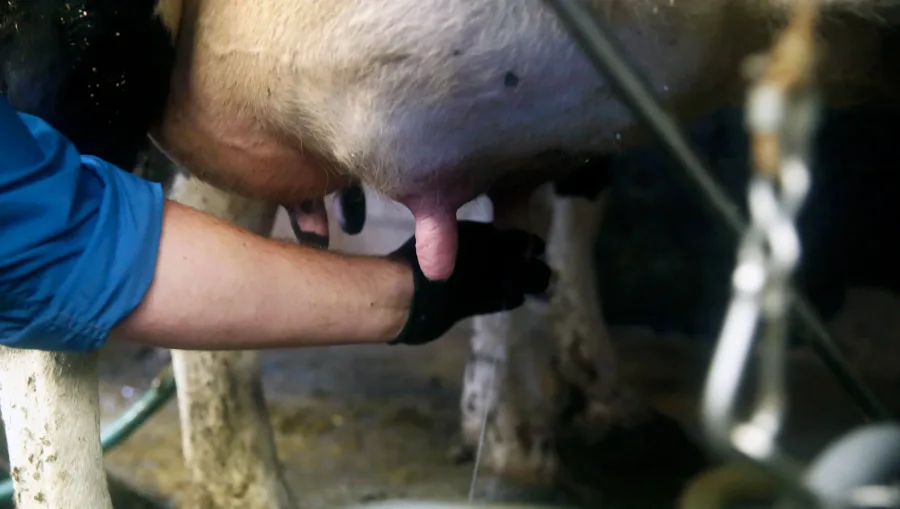What can dairy farmers learn from the 2024 Summer Olympics? Discover surprising lessons that could transform your farm.
Summary: What do dairy farmers, Olympic athletes, and gold medals have in common? More than you’d think! The 2024 Summer Olympics have just wrapped up, leaving behind a treasure trove of valuable lessons that dairy farmers can apply to their everyday lives and businesses. From teamwork and technology to nutrition and handling pressure, athletes from around the world have showcased principles that resonate deeply with the agricultural community. Teamwork is crucial for dairy farming as it helps develop a strong team capable of handling everyday operations. Technology, such as advanced training equipment and performance analytics, can help dairy farms stay ahead by reducing inefficiencies and making better decisions. Nutrition is essential for dairy cows‘ success, and dairy farmers should plan their herd’s nutrition like an Olympic coach to ensure they are not deprived of essential nutrients. To handle pressure effectively, dairy farmers can follow Olympic athletes’ playbooks by establishing routines, implementing mindfulness techniques, taking short breaks, and forming a support network. Continuous improvement is crucial for dairy producers, who must strive to exceed their previous success, much like Gymnast Simone Biles. Ready to dive into the major takeaways? Let’s explore what the 2024 Summer Olympics can teach us about success both on the field and on the farm.
- Teamwork is vital for managing daily operations and improving overall efficiency in dairy farming.
- Advanced technology can help dairy farms reduce inefficiencies and make better strategic decisions.
- Proper nutrition planning is essential to ensure dairy cows receive the necessary nutrients for peak performance.
- Effective pressure management techniques used by athletes can help dairy farmers handle daily stress and challenges.
- Continuous improvement and striving to exceed past performance are key for sustained success in dairy farming.

Picture this: The exhilarating atmosphere of the 2024 Summer Olympics, when competitors demonstrate their top physical abilities and the rhythmic routine of milking cows on your dairy farm. What do these two different worlds have in common? This may come as a surprise, but valuable insights from the Olympics may significantly improve your agricultural methods. From the mental fortitude required to overcome performance pressure to the strategic planning for each race and game, the Olympics give information that may be applied to your everyday farm activities. Stay with me, and we’ll look at how the discipline, inventiveness, and collaboration shown by these world-class sportsmen may improve the efficiency and performance of your dairy operations. Ready to learn more? Let’s plunge in!
Lesson 1 – The Power of Teamwork
Let’s discuss the benefits of collaboration. Have you ever noticed how Olympic competitors constantly praise their coaches, trainers, and teammates during interviews? There is a reason behind that. Success at the Olympics is about one person’s effort and the combined power of a devoted team working together to achieve a shared objective.
Consider the example of the United States Women’s Gymnastics Team. Would their spectacular performance have been feasible without their support system, which included choreographers, dietitians, and mental health specialists? Probably not. Consider Simone Biles, who, under enormous pressure, relied on her teammates to overcome the complicated hurdles of performing at the most significant level.
So, how does this impact dairy farming? It’s simple. Developing a robust and supportive team may make all the difference. Whether it’s family members assisting during peak seasons, staff keeping operations running smoothly or even networking with local agricultural communities for shared resources and guidance, it’s this collaborative effort that binds us all in the dairy farming community and pushes a dairy farm to success.
Remember that farming is not a lonely endeavor. Dairy farmers, like Olympians, need a strong and coordinated team to handle the ups and downs of everyday operations. So, take a page from the athletes’ book: create a support structure, recognize every team member’s effort, and watch your farm develop.
Lesson 2 – Embracing Technology
Technology was everywhere in the 2024 Summer Olympics. Athletes used advanced training equipment and performance analytics to get that extra edge. It’s no secret that top-notch tech can make a significant difference, and that lesson isn’t just for Olympians.
Think about your dairy farm. Are you leveraging the latest technology to stay ahead? Automated milking systems, for instance, can save time and increase the productivity of your herd. Similarly, farm management software can help you keep track of everything from feed to finances, reducing inefficiencies and helping you make better decisions. Other technologies like GPS-guided tractors, robotic feeders, and health monitoring systems can also be beneficial for dairy farming.
Embracing technology isn’t just about keeping up with the times; it’s about setting yourself up for success. Like those Olympians, it’s about using every tool to be your best.
Lesson 3 – Importance of Nutrition:
Have they ever pondered how Olympic athletes accomplish such remarkable feats? It’s no secret that their stringent nutritional routine significantly contributes to their success. From rigorously calibrated protein intake to precisely timed carb loading, their diet is designed to fuel maximum performance. And guess what? Your dairy cows are similar in terms of the significance of a well-balanced diet.
Picture this: Your cows need a balanced diet like an athlete to guarantee excellent milk outputs and general health. This means providing them with a mix of high-quality forage, grains, and supplements to meet their nutritional needs. Research indicates that well-nourished cows produce more milk and live longer healthier lives. For example, research published in the Journal of Dairy Science showed that balanced meals might boost milk output by up to 10%.
So, think like an Olympic coach the next time you plan your herd’s nutrition. Your cows should not be deprived of essential nutrients, just as a sprinter would not eat junk food before a race. The improvements in milk output and cow health will be worth the effort.
Lesson 4 – Handling Pressure:
We’re all aware that Olympic competitors are under enormous strain. Imagine practicing for years and just having a few minutes—or even seconds—to show yourself. The stakes are enormous, and everyone is watching. So, how do they handle stress and stay focused? Many players engage with sports psychologists to improve their mental toughness, use meditation methods, or stick to tight regimens to keep their brains sharp.
Now, let’s switch gears. Dairy farmers experience enormous daily strain. Market swings may be harsh, weather problems unpredictable, and remember the day-to-day grind of farm management. You may be standing at the starting line of an Olympic race, waiting for the gun to fire.
So, how can you deal with this pressure effectively? First, take a leaf from Olympic athletes’ playbooks. Routine might be your greatest friend. Establish dependable, everyday activities that keep the farm operating well and allow for downtime to clear your mind. Second, investigate mindfulness techniques. You may be dubious, but simple breathing exercises help lower cortisol levels and increase attention.
“It’s essential to recognize the signs of stress early on and implement coping strategies before reaching a breaking point,” says Dr. Emily Roberts, a sports psychologist. She highlights the value of taking short, regular breaks and interacting with a supportive group. As dairy farmers, it’s crucial to acknowledge the pressures we face and take proactive steps to manage them. You’re not alone in this journey, and there’s always support available to help you navigate the challenges of dairy farming.
Finally, consider the importance of a support network. It might be beneficial to have someone to speak to, whether family, friends, or other farmers. You’re in it for the long haul, and developing mental resilience will help you remain on track.
Lesson 5 – Continuous Improvement:
Consider the 2024 Summer Olympics athletes: they did not achieve the summit of their sports by remaining still. Instead, they constantly change, striving for the slightest advantage to exceed their previous success. This never-ending cycle of defining new objectives and perfecting approaches is at the heart of continuous development. They constantly adapt, whether modifying their training routines, implementing fresh recuperation tactics, or researching their opponents to identify new areas for personal progress.
Similarly, you can embody this unwavering quest for perfection as a dairy producer. Consider if you were always looking for fresh educational materials or were eager to try new agricultural techniques. There may be a cutting-edge milking device or a new feed ingredient that might boost milk output. The goal is always to be active with your present approach. Accept learning opportunities, attend industry seminars, and cooperate with other farmers to share information and perspectives. Remember, the potential for growth and improvement in dairy farming is limitless.
Gymnast Simone Biles’ Olympic journey exemplifies this approach in a wonderfully inspirational way. Despite being one of history’s most decorated athletes, Biles returned to the 2024 Olympics with fresh capabilities, challenging the limits of her sport (source: ESPN). She constantly improved her tactics, never settling for her previous accomplishments. Her unwavering dedication to progress is an inspiring example for anyone seeking greatness.
So, what measures can you take now to start your road toward continuous improvement in dairy farming? Is there a new method you’ve been considering but have yet to try? Could a recent article or lecture provide new insights into your regular operations? Remember that, like Olympic athletes, you have boundless growth potential.
The Bottom Line
From the cooperation that powered athletes to triumph in Tokyo to the cutting-edge technology that revolutionized preparation and performance, the 2024 Summer Olympics presented many lessons that go well beyond the sporting arena. For dairy producers, focusing on balanced nutrition, intelligent pressure management, and the constant pursuit of continual improvement is significant. These Olympic lessons can improve your operations in various ways, including fostering a more robust team dynamic on your farm, embracing new technological advancements in dairy management, optimizing your livestock’s diet for peak health, and developing strategies to deal with high-pressure moments on the farm.
Reflect on these teachings and choose which Olympic-inspired tactics you will employ on your farm. Every farm has the potential for development and innovation; thus, what actions will you take to ensure your farm’s continued success and evolution?














